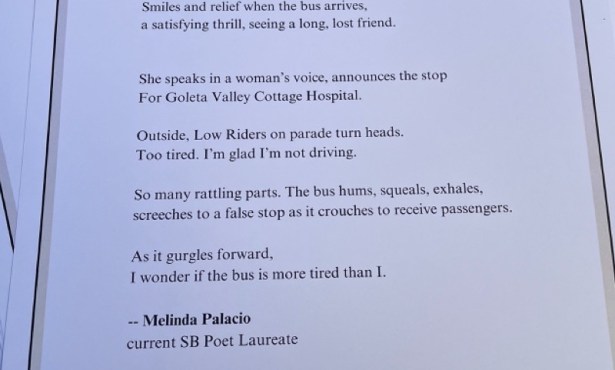When were the first homes built on the Riviera?
The foothills, which run from Mission Canyon east to Sycamore
Canyon, now known as the Riviera, remained undeveloped until the
1870s. In those days this now highly desirable neighborhood was
boulder-strewn, virtually treeless, with no easily accessible water
supplies. It was a long haul from this barren area to downtown by
horse and buggy and the hills were suitable neither for agriculture
nor raising stock. No one wanted to live there.
The first glimmer of change in that attitude appeared in the mid
1870s, when Charles Storke bought 123 acres at $1.25 an acre toward
the western end of the foothills. He then built a home at what is
today 1740 Grand Avenue and proceeded to divide the remainder into
lots of from one to four acres, then waited for the buyers to line
up.
It didn’t happen. Lack of water was a serious drawback; Storke
himself had to have water hauled up to his home by wagon. This was
no easy task given the lack of roads and the rather primitive
condition of the few tracks that were there. Townspeople began to
refer to the entire venture as “Storke’s Folly.”
In 1886, another player came on the scene. Walter N. Hawley was
one of Santa Barbara’s most enterprising entrepreneurs of the late
1800s. He had started out in the hardware and farm equipment
business, but with the arrival of the railroad to town from the
south in 1887, he hoped to capitalize on the anticipated land boom
by going into real estate. Among his projects were two large office
buildings he built on State Street. He had hopes the Riviera would
prove to be another golden opportunity.
Hawley bought most of Storke’s remaining holdings and invested
in road building and a sewer system. A few homes were erected in
what Hawley christened Arlington Heights, but most locals dubbed
Hawley Heights. Development ground to a halt due in part to the
economic depression that gripped the nation in the mid 1890s.
Settlement remained sparse on the Riviera for the next 20
years.
George Batchelder, a prominent banker from San Francisco, came
to Santa Barbara about 1908 to begin his retirement. In the spring
of 1913, he and his partners began buying up land in the foothills.
Their interest had been sparked by the move of the Santa Barbara
State Normal School (the forerunner of UCSB) from its downtown
location to a new campus sited where the Riviera Theatre is today.
The electric street car company, of which Batchelder was an
officer, extended its line from the Old Mission up the hill to the
new campus. Batchelder and his associates named their new
development company The Riviera and the hillside neighborhood now
had a name.
Improvements included new roads to enhance access and
underground power lines to retain the rustic feel of the area.
Growth continued apace. The last section of Alameda Padre Serra,
the Riviera’s main thoroughfare, was paved in 1925. One of the
final areas of the Riviera to be developed was the Las Alturas
section, running from the 1200 block of Alameda Padre Serra to
Sycamore Canyon Road. This was the result of a partnership among
local newspaper publisher Thomas Storke, Charles Storke’s son; film
stars Douglas Fairbanks and Mary Pickford; and William McAdoo,
former Secretary of the Treasury and a good friend of Storke’s.
The development of the Riviera continued in fits and starts,
slowed by the 1925 earthquake, the Depression of the 1930s, and the
entry of the U.S. into World War II in 1941. It was not until the
post-war years that the building boom on the Riviera, first
envisioned by Charles Storke so long ago, really took shape. Today,
unlike the 1870s, people very much like to call Santa Barbara’s
Riviera home.



